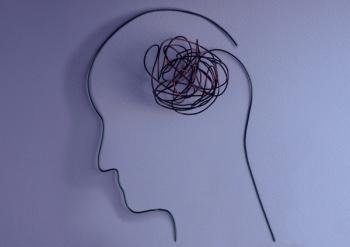
- Vol 42, Issue 7
Successfully Prescribing MAOIs for Depression
Key Takeaways
- MAOIs offer unique efficacy in treatment-resistant depression by increasing serotonin, norepinephrine, and dopamine concentrations. They are effective in refractory cases despite dietary restrictions and potential interactions.
- Augmentation strategies, such as stimulants and lithium, can enhance MAOI efficacy. Clinicians should titrate doses carefully and monitor for interactions to optimize treatment outcomes.
In this CME article, discover effective strategies for prescribing MAOIs in treating major depressive disorder.
CATEGORY 1 CME
Premiere Date: July 20, 2025
Expiration Date: January 20, 2027
This activity offers CE credits for:
1. Physicians (CME)
2. Other
All other clinicians either will receive a CME Attendance Certificate or may choose any of the types of CE credit being offered.
ACTIVITY GOAL
To inform readers of best practices in prescribing monoamine oxidase inhibitors for the treatment of major depressive disorder.
LEARNING OBJECTIVES
1. Learn about dosing, contraindications, and augmentation of monoamine oxidase inhibitors.
2. Compare monoamine oxidase inhibitors with other interventional treatments.
TARGET AUDIENCE
This accredited continuing education (CE) activity is intended for psychiatrists, psychologists, primary care physicians, physician assistants, nurse practitioners, and other health care professionals who seek to improve their care for patients with mental health disorders.
ACCREDITATION/CREDIT DESIGNATION/FINANCIAL SUPPORT
This activity has been planned and implemented in accordance with the accreditation requirements and policies of the Accreditation Council for Continuing Medical Education (ACCME) through the joint providership of Physicians’ Education Resource®, LLC and Psychiatric Times. Physicians’ Education Resource, LLC is accredited by the ACCME to provide continuing medical education for physicians.
Physicians’ Education Resource, LLC designates this enduring material for a maximum of 1.5 AMA PRA Category 1 Credits.™ Physicians should claim only the credit commensurate with the extent of their participation in the activity.
This activity is funded entirely by Physicians’ Education Resource, LLC. No commercial support was received.
OFF-LABEL DISCLOSURE/DISCLAIMER
This accredited CE activity may or may not discuss investigational, unapproved, or off-label use of drugs. Participants are advised to consult prescribing information for any products discussed. The information provided in this accredited CE activity is for continuing medical education purposes only and is not meant to substitute for the independent clinical judgment of a physician relative to diagnostic or treatment options for a specific patient’s medical condition. The opinions expressed in the content are solely those of the individual faculty members and do not reflect those of Physicians’ Education Resource, LLC.
FACULTY, STAFF, AND PLANNERS’ DISCLOSURES AND CONFLICT OF INTEREST MITIGATION
None of the staff of Physicians’ Education Resource, LLC or Psychiatric Times or the planners or the authors of this educational activity have relevant financial relationship(s) to disclose with ineligible companies whose primary business is producing, marketing, selling, reselling, or distributing health care products used by or on patients.
For content-related questions, email us at
HOW TO CLAIM CREDIT
Once you have read the article, please use the following URL to evaluate and request credit:
Editor’s Note: A
“Ms Wendy” is a 58-year-old, self-employed woman who presents for consultation for a long-standing unresponsive depressive illness. The depressive episode dates back 18 months, when she presented to her primary care physician (PCP) with depressed mood, anhedonia, decreased ability to concentrate and focus on daily home tasks, increasing hopelessness, and diminished energy and motivation to take on job responsibilities. There is no personal or family history of bipolar disorder. Ms Wendy related a milder, less incapacitating depressive episode 15 years earlier, which responded to sertraline.
The PCP prescribed successive trials of antidepressants (ie, sertraline, escitalopram, duloxetine) at therapeutic doses of adequate duration; they failed to adequately address her symptoms.
Ms Wendy then sought psychiatric consultation, when she received augmentation trials to duloxetine with bupropion and subsequently aripiprazole. She noted limited response with continued significant symptoms and increasing hopelessness over her lack of response to treatment. The treating psychiatrist recommended either a trial of electroconvulsive therapy (ECT) or esketamine. Ms Wendy was concerned about possible cognitive deficits from ECT and, despite concerns, was mulling an esketamine trial when she sought your consultation. Should you recommend a monoamine oxidase inhibitor (MAOI)?
Exploring the MAOIs
The inhibition of isoform monoamine oxidase (MAO)-A generates antidepressant effectiveness because it metabolizes the neurotransmitters associated with depression treatment.2,3 MAOIs inhibit MAO in the brain, thereby increasing the intracellular concentrations of serotonin (5HT), norepinephrine (NE), and dopamine (DA), resulting in an absolute increase in extracellular synaptic monoamine concentrations of these 3 major neurotransmitters linked to mood and anxiety disorders.4 In contrast, the reuptake inhibitors—selective serotonin reuptake inhibitors (SSRIs), serotonin-norepinephrine reuptake inhibitors (SNRIs), norepinephrine- dopamine reuptake inhibitors (NDRIs), and tricyclic antidepressants (TCAs)—produce only a relative, extracellular increased concentration of 5HT, DA, and/or NE within the synaptic cleft (ie, but not all 3 of these depression-related neurotransmitters). Thus, MAOIs’ triple effect may in part explain their unique efficacy.2,4 However, similar to other oral antidepressants, the multiweek lag in subsequent response illustrates that downstream effects are crucial in their therapeutic mechanism.3 The oral MAOI antidepressants available in the United States are nonselective and inhibit both isoforms (MAO-A and MAO-B;
Interestingly, selegiline functions as an MAO-B inhibitor at lower doses, marketed as an antiparkinsonian agent, but at higher doses (≥ 20 mg/day), it also inhibits the breakdown of MAO-A and possesses antidepressant benefits.5 Although well tolerated and effective at higher doses, the oral version is commercially available only as 5-mg tablets. Thus, 30- to 60-mg/day antidepressant doses5,6 require ingesting multiple pills per day, which makes them less practical.
The selegiline transdermal system (STS), a transdermal patch formulation of selegiline, is available only as a trade name product, Emsam, and can be delivered in 6-, 9-, or 12-mg doses over 24 hours.7 In large measure, it bypasses intestinal inhibition of MAO-A, allowing for detoxification of ingested tyramine by still active MAO-A intestinal enzyme.3,5,7
Although MAOI dietary limitations at the 6-mg patch dose size are not required, it is not clear if higher patch doses precipitate a hypertensive reaction in clinical use.7 A theoretical model of hypertensive risk suggested that problematic levels of gut MAO-A inhibition could occur with the 9- and 12-mg patches, which prompted the FDA to require dietary restrictions at those doses. However, there is a lack of definitive cases of hypertensive reactions at these higher doses associated with the STS in both the preapproval studies and the postapproval literature.7,8 One review concluded that “this probably unnecessary practice remains the standard of care if only for medicolegal reasons.”7
When prescribing any dose of transdermal selegiline, clinicians should watch for possible selegiline-serotonergic drug interactions (eg, SSRI-SNRI), as they are not minimized by this nonoral form, analogous to traditional oral MAOIs.7
The creation of reversible inhibitors of MAO-A (RIMAs) aimed to provide the antidepressant potential of MAOI inhibition while minimizing dietary restrictions and hypertensive risk. RIMAs reversibly and selectively bind to MAO-A and thus inhibit the breakdown of neurotransmitters like 5HT, NE, and DA.9 Moclobemide, an example of such, is available internationally but is not FDA approved.9 Interestingly, when ingested, tyramine facilitates the displacement of moclobemide off MAO-A in the liver, intestine, and sympathomimetic neurons, resulting reactivation of much MAO-A activity.3 This allows for the breakdown of tyramine, greatly diminishing the risk of a hypertensive crisis. Although product information monographs in other countries do not all require dietary restrictions,10 some suggest caution in ingesting large amounts of tyramine-rich food.9 Moclobemide is well tolerated. Experienced psychopharmacologists have found it inferior to the traditional MAOIs for more severe illness.4,11
Meanwhile, all approved MAOIs in the United States are irreversible: Once they attach to the MAO enzyme, they irreversibly render it inactive. The MAO enzyme is not available to block incoming biogenic amines such as tyramine from entering the body. This extends even after MAOI discontinuation for at least 2 weeks, which is how long it typically takes to regenerate sufficient new MAO enzymes.
Clarifying a point discussed in my earlier MAOI article,1 in distinction to a 2-week delay sufficing before reintroducing dietary tyramine, when switching from an MAOI to a serotonergic antidepressant (eg, SSRI, SNRI, clomipramine), this 2-week delay is a minimum time period. After this delay, one should slowly and carefully introduce the serotonergic agent to prevent the potential development of serotonin syndrome.
Determining the Dosing Schedule
When titrating dosing, a balance must be struck between pursuing clinical benefit and managing adverse effects, particularly postural hypotension (
Often, MAOI dosing is split into morning and midday doses, particularly in the initial treatment phase. This split is not a need based on medication half-life, but rather serves to maximize tolerance, including minimizing occasional transient elevated blood pressure that may occur immediately after dosing (primarily with tranylcypromine).4,12 Note this blood pressure elevation is not the hypertensive reaction discussed in the previous article. Night dosing is typically avoided due to MAOIs’ insomnia potential. Alternatively, some patients may prefer once-daily dosing, assuming their dose is not too great (eg, to enhance adherence); night dosing; or half-dose incremental changes, etc.
The adequacy of the daily dose is crucial with MAOIs, as there is a dose-response curve.12-14 Titration to a given MAOI dose in the higher upper therapeutic range may be required, particularly in patients with more severe illnesses. Inadequate MAOI dosing has been a factor in the appearance of their lack of efficacy.15 This was the case with the STAR*D study, in which tranylcypromine performed poorly.16 The average dose of tranylcypromine in patients with treatment- resistant depression was only 37 mg/day.15,16 Similar to other oral antidepressant treatments for severe or refractory depression, MAOIs may take 6 to 8 weeks to generate a notable response at the adequate therapeutic dose, and perhaps longer with phenelzine.4 Contraindications to MAOI use can be found in
Choosing an Agent
Adverse events and efficacy are generally the top factors when choosing an agent.19 Tranylcypromine and transdermal selegiline tend to be more activating than phenelzine.12,20,21 Phenelzine, despite its relatively more problematic adverse effect profile (eg, sexual effects, weight gain, and sedation potential), appears to have greater efficacy with refractory anxiety disorders and perhaps refractory depression.4,19,22
Tranylcypromine offers the best mix of tolerance and effectiveness in most severe depressions and is thus a typical initial MAOI choice.4 STS is a good alternative to oral medication; it does not require MAOI dietary restrictions at the 6-mg dose. However, some experienced clinicians feel that STS is not quite as potent as the older, irreversible MAOI agents4,7 and there are limited data in refractory depression.5,7,11 This author frequently finds raising the STS dose to the 9- and 12-mg patch doses necessary to achieve response.
Isocarboxazid is considered a somewhat milder version of phenelzine (hence we have colloquially nicknamed it “phenelzine lite”4). It is infrequently prescribed, often reserved for those who respond to phenelzine but have difficulty with its adverse effects.
Augmentation Options
There has been much hesitancy and fear around using augmentation or combination strategies with MAOIs.23 However, several potential augmentation and combination options have been reported to be used effectively and safely for MAOI monotherapy refractory cases.4,12,20,24,25 Please note the MAOI dose should ideally be raised to the maximum tolerable dose before moving to these approaches.11
As in much of psychopharmacology, adding a second agent to an existing MAOI trial should follow the maxim “start low, go slow, and make 1 change at a time.” There are decades-long case series data and significant clinical experiences supporting the use of stimulants (eg, methylphenidate or low- to moderate-dose amphetamine) as augmentation for refractory depression.4,17,20,26-28 High-dose amphetamine may be contraindicated.4
Lithium has been prescribed as an augmentation agent to antidepressants for refractory depression for more than 40 years.29 Uncontrolled studies, case reports, and frequent expert recommendations support its effective and safe use with MAOIs.4,8,25,30,31
There are no controlled studies on the optimal serum levels for lithium augmentation with any antidepressant.32 A suggested serum level range for lithium augmentation with an MAOI is 0.4 to 0.7 mEq/L in otherwise healthy adults,17 which parallels the 0.5- to 0.8-mEq/L range suggested for lithium augmentation of other antidepressants.32 There are also clinical experience and case reports supporting the effective use of thyroid augmentation, particularly liothyronine (T3), with MAOIs, in otherwise euthyroid patients.4,33-35 The augmentation dosing range of T3 appears parallel to that of other antidepressants, 25 to 50 μg per day.36
There is an overgeneralized concern of hypertensive or serotonergic crises when combining TCAs and MAOIs, in part stemming from severe reactions when imipramine was combined with MAOIs in earlier years.4,25,37 The exception is clomipramine and imipramine, which have significant serotonergic reuptake properties and should not be combined with an MAOI; other TCAs can be mixed safely if titrated slowly.4,20,38
Many but not all studies support the greater efficacy of TCA-MAOI combination compared with monotherapy.4,20,21,25,37 The safety of this combination is also illustrated in the frequent overlapping of these 2 medicine classes in bridging, a technique used to taper off an SSRI in preparation for an MAOI trial.1,39 There are nuances between the various TCAs, but no clear data demonstrating superior efficacy of a given TCA11; however, this author’s preference is to select nortriptyline, in combination, as it possesses a reasonable balance of safety and efficacy.17
Similarly, other antidepressants that do not offer serotonergic interactions or hypertensive risk potential may be combined with MAOIs, eg, bupropion, mirtazapine, and trazodone.4 There are several reports describing the efficacy and safety of combining pramipexole, a potent dopamine agonist, with an MAOI in patients with anhedonia and apathy.4,17,40,41 Note that pramipexole must be added slowly to minimize adverse effects such as nausea and sedation, and it carries a risk of poor impulse control and disinhibition spectrum symptoms.42
While augmenting atypical antipsychotics (APs) to a newer-generation antidepressant is a very popular, database-supported strategy to treat inadequate response,43 their augmentation of an MAOI is limited to chart reviews and clinical case reports.44 However, there is robust literature in using MAOIs safely and effectively in combination with first-generation antipsychotics,44 supporting their reported safety with the newer APs as well (with the exclusion of lumateperone and ziprasidone due to their mild serotonergic reuptake blockade properties).4,44
Another interesting augmentation option is the use of a ketamine preparation, with reports of safely and effectively combining either off-label intravenous (IV) ketamine or intranasal esketamine with an MAOI in patients with refractory depression.4,12,45-47
Finally, in cases of nonresponse, switching to an alternative MAOI is an option.11 MAOIs have pharmacologic differences in their secondary, non–MAOI-related properties.4,44 Experienced clinicians and case series data demonstrate success with switching, with the caveat that an adequate washout after tapering the initial MAOI (eg, at least 7 to 14 days) is recommended.4,11,48,49
ECT, Ketamine, and TMS
MAOIs hold an important place in the treatment-resistant depression algorithm (
ECT. ECT has been a gold-standard treatment for severe depressive episodes and refractory depression.54 However, patients may find it hard to tolerate or worry about the potential cognitive and amnesic deficits as well as the need for general anesthesia.55 Maintaining remission once achieved, beyond providing maintenance ECT, remains a practical dilemma.12,56
By contrast, MAOI treatment is often well tolerated when appropriately titrated. Like ECT, MAOIs have a decades-long history of efficacy for nonresponding significant depressive illnesses. Furthermore, MAOIs also provide efficacy in maintenance treatment.57 In a patient who is severely malnourished or who has acute suicidal ideation, ECT would be more appropriate with its more rapid, robust response potential.
Ketamine. Off-label IV ketamine and intranasal esketamine have a growing efficacy database for acute depression, including nonresponsive depressions.58,59 However, recent media reports and concerns focusing on its potential for abuse may influence patients.59 Ketamine has a good rapidity of onset of response, measured in hours to days,58 which is an advantage over MAOIs that typically take weeks to titrate and achieve response.
Maintenance treatment is an important issue. There is a virtual lack of successful data on the durability of ketamine treatment without continued maintenance with ketamine.59 Additionally, controlled long-term safety data for esketamine or IV ketamine is limited to a few years (eg, published long-term data on esketamine is 4.5 years).60 In comparison, there are decades of MAOI maintenance experience. Thus, MAOIs might be a more appropriate option (except in cases of acute suicide risk). Arguably, ketamine may be considered a short-term bridge while waiting for MAOI response or as an augmenting agent to MAOI if needed, as this combination appears safe based on case series and anecdotal reports.12,46 The ketamine research literature continues to advance, so a final assessment is not available.
TMS. TMS has demonstrated acute efficacy vs sham across a heterogeneous group of patients diagnosed with refractory depression.61 It has a high level of tolerance and low adverse effect potential. The slower rate of significant response appears similar to that of MAOIs, requiring several weeks.61,62
However, skeptics note that TMS’ value in patients with more severe depression has not been adequately demonstrated,63,64 and the veracity of reported positive meta-analysis data has been questioned.65 TMS has been reported to be inferior to ECT,66 and has perhaps lesser efficacy in geriatric depression.67 The durability of acute treatment response appears limited, particularly for patients with more severe illnesses.68
Additionally, there are few demonstrated control studies showing TMS’ value as a maintenance or continuation treatment, and paralleling concerns around ketamine, it lacks long-term, multiyear longitudinal data.61 TMS is also expensive and can be difficult to receive without adequate insurance coverage.69
Concluding Thoughts
In terms of efficacy and adverse effect profile, MAOIs continue to be an appropriate viable option for patients with depression who do not respond to treatment.
In our earlier case, given Ms Wendy’s long-standing, treatment-resistant depression and limited response to multiple classes of antidepressants and augmentation strategies, a trial of an MAOI—particularly tranylcypromine or phenelzine—may offer a reasonable next step. These agents provide broader monoamine enhancement than SSRIs, NDRIs, or SNRIs and have demonstrated efficacy in refractory cases.
Ms Wendy’s clinician provides appropriate monitoring and education, including dietary restrictions and medication interactions. Given her hesitancy about ECT and ketamine, offering her a well-supported oral option may empower her engagement in care. Close follow-up and collaboration will help her navigate the therapeutic potential and logistical considerations and improve her care.
Dr Feinberg is an associate clinical professor of psychiatry at Montefiore Medical Center, Albert Einstein College of Medicine of Yeshiva University in Bronx, New York.
References
1. Feinberg S. Understanding and overcoming negative preconceptions about MAOIs. Psychiatric Times. 2025;42(5).
2. Finberg JPM.
3. Stahl SM, Felker A.
4. Van den Eynde V, Abdelmoemin WR, Abraham MM, et al.
5. Rossano F, Caiazza C, Sobrinoa A, et al.
6. Bodkin JA, Kwon AE.
7. Cristancho MA, Thase ME.
8. Pae CU, Bodkin JA, Portland KB, et al.
9. Bonnet U.
10. Moclobemide. Prescribing information. AA Pharma; 2023. Accessed April 25, 2025.
11. Bobo WV, Richelson E. Monoamine oxidase inhibitors for treatment-resistant depression. In: Quevedo J, Riva-Posse P, Bobo WV, eds. Managing Treatment-Resistant Depression. Elsevier Academic Press; 2022:137-166.
12. Berk MB, Van den Eynde V, Ganapath KA, et al. An expert roundtable discussion on the use of classic monoamine oxidase inhibitors in the treatment of depression – part two. Psychiatr Annals. 2023;53(8):364-369.
13. Adli M, Baethge C, Heinz A, et al.
14. Chiuccariello L, Cooke RG, Miller L, et al.
15. Van den Eynde V, Parker G, Ruhé HG, et al.
16. Nolen WA, van den Broek WW, Birkenhäger TK.
17. Stahl S, Van den Eynde V, Godet L, et al.
18. Kim TT, Amsterdam JD.
19. Gillman PK.
20. Goldberg JF, Thase ME.
21. Cole JO, Bodkin JA.
22. Suchting R, Tirumalajaru V, Gareeb R, et al.
23. Grady MM, Stahl SM.
24. Zajecka JM, Fawcett J.
25. Wagner E, Seemüller F, Hasan A.
26. Fawcett J, Kravitz HM, Zajecka JM, Schaff MR.
27. Feinberg SS.
28. Thomas SJ, Shin M, McInnis MG, Bostwick JR.
29. Bauer M, Adli M, Ricken R, et al.
30. Nelson JC, Byck R.
31. Fein S, Paz V, Rao N, LaGrassa J.
32. Ercis M, Ozerdem A, Singh B.
33. Joffe RT.
34. Tobe EH, Stewart JW, Staab JP, et al.
35. Meyer JM.
36. VA/DoD Clinical Practice Guideline: Management of Major Depressive Disorder. US Department of Veterans Affairs; 2022.
37. Amsterdam JD, Kim TT.
38. Ferreira-Garcia R, da Rocha Freire R, Appolinário J, et al.
39. Bodkin JA, Dunlop BW.
40. Tundo A, Betro’ S, Iommi M, de Filippis R.
41. Dormegny-Jeanjean LC, de Billy C, Mainberger O, et al.
42. Tundo A, Betro’ S, de Filippis R, et al.
43. Vas C, Jain A, Trivedi M, et al.
44. Ulrich S, Ricken R, Adli M.
45. Veraart JKE, Smith-Apeldoorn SY, Kutscher M, et al.
46. Bottemanne H, Bonnard E, Claret A, et al.
47. Wallner MA, Eloge JC, Mackey IV, Zajecka J.
48. Stewart JT.
49. Polnak J, Finegan A, Ji H, et al.
50. Birkenhager TK, Heijnen WT.
51. Beck K, Young AH.
52. Valerio MP, Szmulewicz AG, Martino DJ.
53. Berman J, Ambrose AJ.
54. Goldberg JF.
55. Van den Eynde V, Gillman K. MAOI or ECT? patient preference and joint decisionmaking in treatmentresistant depression. Curr Treat Options Psych. 2022;9(1):419-422.
56. Jørgensen A, Gronemann FH, Rozing MP, et al.
57. Kennedy SH.
58. Rodolico A, Cutrufelli P, Di Francesco A, et al.
59. Singh B.
60. Zaki N, Chen LN, Lane R, et al.
61. Adu MK, Shalaby R, Chue P, Agyapong VIO.
62. Sackeim HA, Aaronson ST, Carpenter LL, et al.
63. Malhi GS, Bell E.
64. Malhi GS, Bell E, Mannie Z, et al.
65. Brini S, Brudasca NI, Hodkinson A, et al.
66. Chigareva O, Smirnova D, Astafeva D, et al.
67. Cappon D, den Boer T, Jordan C, et al.
68. Wilson S, Croarkin PE, Aaronson ST, et al.
69. Weissman CR, Bermudes RA, Voigt J, et al.
Articles in this issue
6 months ago
The Hotseat...6 months ago
Using Serum Drug LevelsNewsletter
Receive trusted psychiatric news, expert analysis, and clinical insights — subscribe today to support your practice and your patients.
















